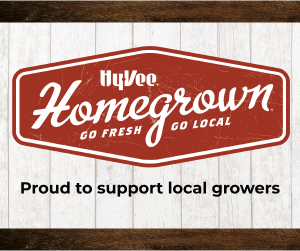Five years of Sox

.bodytext {float: left; } .floatimg-left-hort { float:left; margin-top:10px; margin-right: 10px; width:300px; clear:left;} .floatimg-left-caption-hort { float:left; margin-bottom:10px; width:300px; margin-right:10px; clear:left;} .floatimg-left-vert { float:left; margin-top:10px; margin-right:15px; width:200px;} .floatimg-left-caption-vert { float:left; margin-right:10px; margin-bottom:10px; font-size: 10px; width:200px;} .floatimg-right-hort { float:right; margin-top:10px; margin-left:10px; margin-bottom:10px; width: 300px;} .floatimg-right-caption-hort { float:left; margin-right:10px; margin-bottom:10px; width: 300px; font-size: 10px; } .floatimg-right-vert { float:right; margin-top:10px; margin-left:10px; margin-bottom:10px; width: 200px;} .floatimg-right-caption-vert { float:left; margin-right:10px; margin-bottom:10px; width: 200px; font-size: 10px; } .floatimgright-sidebar { float:right; margin-top:10px; margin-left:10px; margin-bottom:10px; width: 200px; border-top-style: double; border-top-color: black; border-bottom-style: double; border-bottom-color: black;} .floatimgright-sidebar p { line-height: 115%; text-indent: 10px; } .floatimgright-sidebar h4 { font-variant:small-caps; } .pullquote { float:right; margin-top:10px; margin-left:10px; margin-bottom:10px; width: 150px; background: url(http://www.dmbusinessdaily.com/DAILY/editorial/extras/closequote.gif) no-repeat bottom right !important ; line-height: 150%; font-size: 125%; border-top: 1px solid; border-bottom: 1px solid;} .floatvidleft { float:left; margin-bottom:10px; width:325px; margin-right:10px; clear:left;} .floatvidright { float:right; margin-bottom:10px; width:325px; margin-right:10px; clear:left;} When his company needed to raise $18 million last year to expand production capacity for its flexible solar panels, Ames-based PowerFilm Inc. founder and CEO Frank Jeffrey knew he needed to take his company public.
“We were looking at the Nasdaq (Stock Market),” he said. “But Sarbanes-Oxley made that impossible.”
So Jeffrey did something an increasing number of American companies are doing now: He sold PowerFilm shares on London’s Alternative In-vestment Market.
“Fifteen to 20 years ago, the Nasdaq was a good vehicle for small businesses to grow in the United States,” Jeffrey said. “It’s not that way anymore.”
Nearly 13 percent of the companies traded on Alternative Investment Market are based in the United States, according to the Web site for the exchange, an 11-year-old sub-market of the London Stock Exchange.
The PowerFilm initial public offering, which took roughly three months from start to finish, turned out to be a quicker way of raising capital from a more stable group of investors than would have been the case if the company had done an IPO on Nasdaq or another U.S. market, Jeffrey said.
Though the Sarbanes-Oxley Act of 2002, or SOX as it is known, is not entirely to blame for the added costs, it does play a huge part, he said.
Sarbanes-Oxley set more stringent auditing and regulatory requirements and was signed into law by President George W. Bush on July 30, 2002. Scandals that brought down the likes of Enron Corp. and MCI WorldCom had eroded investor confidence and shaken world markets, and SOX was the federal government’s attempt to remedy the crisis and cure the ills of corporate America.

For a larger company, it is a lot of money. But for a small company like us, it means going out of business.
– Frank Jeffrey founder and CEO, PowerFilm Inc.
Five years later, the law has had a sweeping effect on the world of publicly traded companies. Proponents claim it has cleaned up the nation’s boardrooms. Critics contend it has stifled corporate and economic growth.
“Overall it has been a very positive act and its provisions have had a positive effect,” said Kirk Tibbetts, financial controller at Principal Financial Group Inc. “But it can be a large expense for a lot of companies.”
The most contentious aspect of SOX is Section 404, which requires management and the external auditor to report on the adequacy of the company’s internal control over financial reporting. This is the most costly aspect of the legislation for companies to implement, as documenting and testing important financial manual and automated controls requires enormous effort.
“For a larger company, it is a lot of money,” Jeffrey said. “But for a small company like us, it means going out of business.”
The cost of complying with Section 404 affects smaller companies more, as there is a significant fixed cost involved in completing the assessment. For example, during 2004 U.S. companies with revenues exceeding $5 billion spent 0.06 percent of their revenues on SOX compliance, and companies with less than $100 million in revenues spent 2.55 percent, according to an SEC report.
In response to concerns that Sarbanes-Oxley has placed too heavy a burden on small-cap and mid-cap public companies, the Securities and Exchange Commission approved some changes to Section 404. The changes were formulated by the Public Company Accounting Oversight Board, which was formed in 2002 to oversee the regulations.
“Information we are required to provide is just as detailed, and in many cases more detailed, on the London Exchange, but the way of doing it is far more efficient,” Jeffrey said. “We can comply by putting everything on our Web site as opposed to massive filings with the SEC.”
The changes to SOX, which were implemented in July, are still too new to evaluate, Tibbetts said. But initially, he said, they should help simplify the process and make compliance less expensive for businesses.
“We haven’t tracked internal costs associated with SOX compliance, but companies have spent millions,” he said.
Mike Coon, chief operating officer and chief financial officer at PowerFilm, said his company would have spent $500,000 to $1 million annually to comply with SOX.
“We would have had to raise the price on our products a lot to do it, and the solar field is very competitive,” he said. “Our business model is focused on low-cost manufacturing, so that really didn’t work for us at all.”
Additionally, the company wanted to raise $18 million, which is considerably less than typical initial public offerings on Nasdaq. Most Nasdaq IPOs are in the range of $100 million, Coon said, and few raise less than $50 million.
“It made no sense for us,” he said.
Moreover, the activities associated with the Enron and other corporate scandals, which motivated the passage of the act, were illegal before SOX was passed, Jeffrey said.
“(SOX compliance) requires a huge extra expense on auditing and internal controls, something most big companies are already doing,” he said. “The problem in every case of these scandals was irresponsible demands from investors, and SOX hasn’t and won’t solve those problems.”
Jeffrey said the additional expenses have hurt U.S. business by giving businesses trading in foreign markets a competitive advantage.
“Companies no longer look at New York as the financial capital of the world anymore,” he said. “SOX didn’t do that by itself, but it sure helped.”
Tibbetts said that though SOX has increased expenses for companies trading on American exchanges, companies here are also more transparent, which can soothe the worries of investors.
“The issues that brought SOX on were some bad apples at the top of organizations that made poor decisions,” he said. “This law does have a lot of positive aspects for American companies.”
Five years after Congress first passed the Sarbanes-Oxley Act, many public companies are still unsure about its effect on corporate America. But most agree that the act, in some form or another, is here to stay.
“Once a law is passed, it’s pretty hard to undo it,” Jeffrey said. “Hopefully they will continue to make improvements on SOX as we move forward.”








